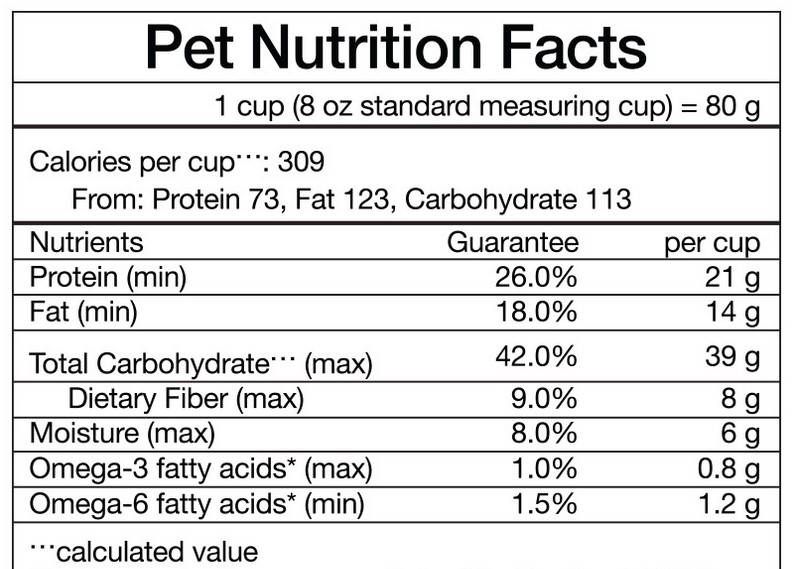
How to Read and Understand Dog Food Labels
As pet owners, ensuring our dogs receive proper nutrition is paramount to their health and well-being. With the abundance of dog food options available, navigating through the maze of labels can be overwhelming. Understanding how to read a dog food label is crucial in making informed decisions about what to feed our beloved pets. This comprehensive guide aims to demystify the intricacies of dog food labels, empowering you to choose the best diet for your furry friend.
Table of Contents
The Basics of Dog Food Labels
Before diving into deciphering the label itself, it’s essential to understand the regulatory framework governing pet food labeling. Dog food labels play a crucial role in ensuring that pet owners make informed decisions about their furry friends’ nutrition.
In the UK, several guidelines govern what information must be included on these labels to provide transparency and help consumers choose the most suitable diet for their canine companions.
Firstly, the label should prominently display the product name and its intended purpose, such as “complete” or “complementary” food. This indicates whether the food is a balanced diet or intended to be part of a larger meal plan.

Ingredients should be listed in descending order by weight, allowing consumers to identify the main components of the food. Additionally, specific meat or animal derivatives must be clearly labeled, ensuring pet owners know precisely what they’re feeding their dogs.
Nutritional information, including protein, fat, and carbohydrate content, should be provided on the label. This enables pet owners to assess whether the food meets their dog’s dietary requirements.
The label should also include feeding guidelines based on the dog’s weight or size, helping owners determine appropriate portion sizes.
Manufacturers must provide contact information for inquiries or complaints, ensuring transparency and accountability.
By understanding and adhering to these guidelines, pet owners can confidently select the best food for their beloved canine companions, promoting their health and well-being.
Understanding Ingredient Lists
The ingredient list is perhaps the most critical aspect of a dog food label. It provides insight into the composition of the food and helps you determine its quality. Ingredients are listed in descending order by weight, with the most prominent components listed first. Here’s what to look for:

Protein Sources
Protein is essential for dogs as it provides the building blocks for muscle development and overall health. Look for high-quality protein sources such as whole meats (e.g., chicken, beef, lamb), meat meals (e.g., chicken meal, beef meal), and fish. Avoid generic terms like “meat by-products” or “animal digest,” as these may indicate lower-quality protein sources.
Carbohydrates
Carbohydrates serve as a source of energy in dog food. While dogs don’t require carbohydrates in the same way humans do, they can still benefit from complex carbohydrates like whole grains like brown rice, and oats as well as vegetables such as sweet potatoes, and peas. Avoid foods with excessive amounts of fillers like corn, wheat, and soy, which offer little nutritional value and may trigger allergies in some dogs.
Fats
Healthy fats are crucial for maintaining a dog’s skin, coat, and overall health. Look for named fat sources such as chicken fat, fish oil, or flaxseed. These provide essential fatty acids like omega-3 and omega-6, which support cognitive function and immune health. Avoid foods with generic fat sources like “animal fat,” as these may be of lower quality and less nutritious.
Additives and Preservatives
Scan the ingredient list for artificial additives, preservatives, and fillers. While some additives are harmless, others may have adverse effects on your dog’s health. Opt for foods preserved with natural antioxidants like tocopherols (vitamin E) or rosemary extract, and avoid those containing artificial colors, flavors, or preservatives like BHA, BHT, or ethoxyquin.
Understanding Nutrient Levels in Dog Food
The guaranteed analysis section provides a snapshot of the food’s nutrient content, including protein, fat, fiber, and moisture. While these values can help compare different foods, it’s essential to consider them in conjunction with the ingredient list and feeding guidelines. Here’s what to keep in mind:
Protein and Fat Content
Look for foods with adequate protein and fat levels to meet your dog’s nutritional needs. Experts recommend a minimum of 18% protein and 5% fat for adult dogs, but requirements may vary depending on factors like age, breed, and activity level. Choose foods that align with your dog’s specific needs.

Fiber Content
Fiber plays a crucial role in digestion and gastrointestinal health. While dogs don’t require as much fiber as humans, a moderate amount can aid in regular bowel movements and prevent constipation. Look for foods containing natural sources of fiber like fruits, vegetables, and whole grains.
Moisture Content
Moisture content refers to the amount of water present in the food. While dry dog food typically contains around 10% moisture, wet or canned food can have significantly higher moisture levels, often exceeding 70%. Consider your dog’s preferences and specific health needs when choosing between wet and dry food options.
Understanding Feeding Guidelines
Feeding guidelines provide recommendations on how much food to feed your dog based on factors like weight, age, and activity level. However, these guidelines are just that—guidelines. Individual dogs may have unique dietary requirements, so it’s essential to monitor your dog’s weight, energy levels, and overall health and adjust their food intake accordingly.
Additional Considerations
While the ingredient list, guaranteed analysis, and feeding guidelines are essential factors to consider when choosing a dog food, several additional considerations can further inform your decision:
Brand Reputation and Transparency
Research the brand’s reputation and commitment to quality and transparency. Look for brands that prioritize sourcing high-quality ingredients, conducting rigorous testing, and providing clear and accurate labeling information. Customer reviews and testimonials can also offer valuable insights into the brand’s reliability and customer satisfaction.
Nutritional Adequacy
Ensure that the food meets AAFCO nutritional standards for the appropriate life stage (e.g., adult maintenance, growth, or all life stages). Foods labeled as “complete and balanced” have undergone feeding trials or formulated to meet these standards, assuring that they contain essential nutrients in the right proportions.
Special Dietary Needs
Consider any special dietary needs or restrictions your dog may have, such as food allergies, sensitivities, or medical conditions. Consult with your veterinarian for personalized recommendations and guidance on selecting the most suitable diet for your dog’s unique needs.
Wrapping It Up
Reading a dog food label may seem daunting at first, but armed with the knowledge provided in this guide, you can confidently navigate the aisles of pet food options and make informed choices for your furry companion. By understanding the significance of ingredients, nutrient levels, feeding guidelines, and additional considerations, you can ensure that your dog receives the nutrition they need to thrive. Remember, your dog’s health and well-being are worth the effort of deciphering those labels.




